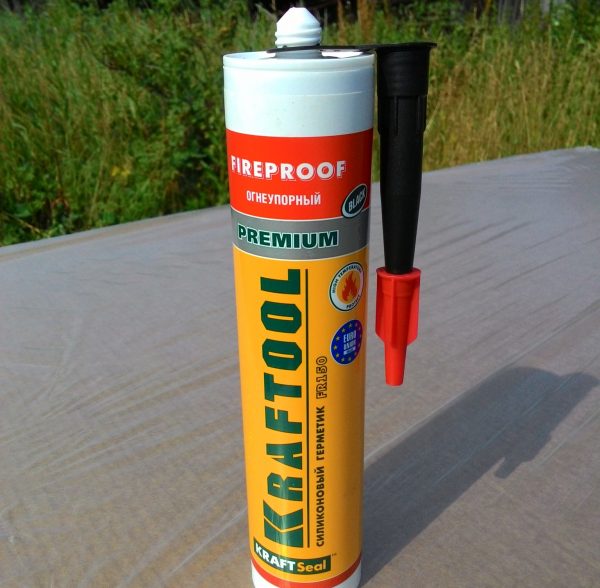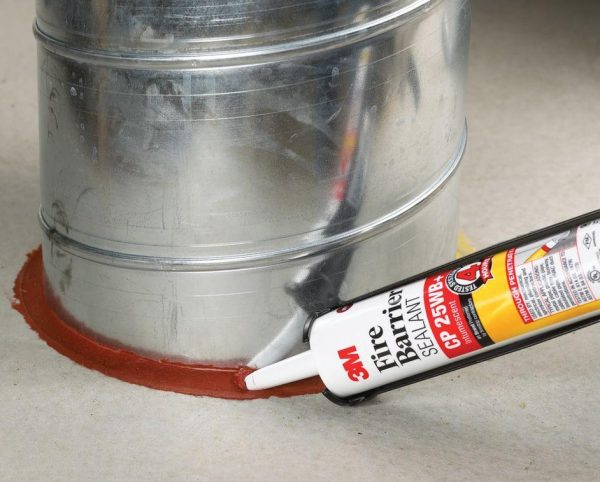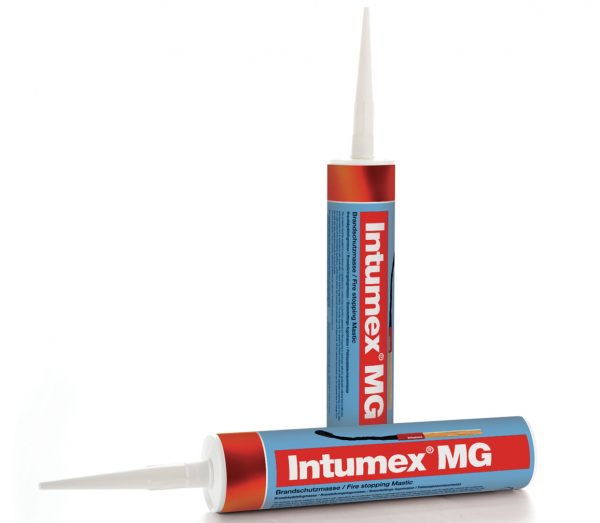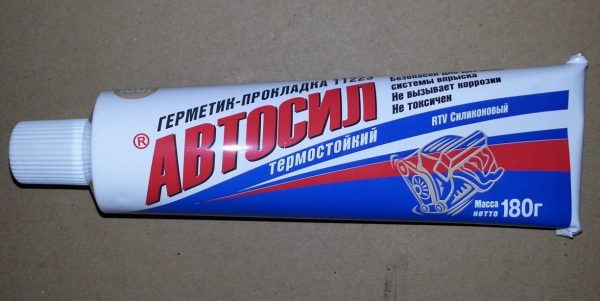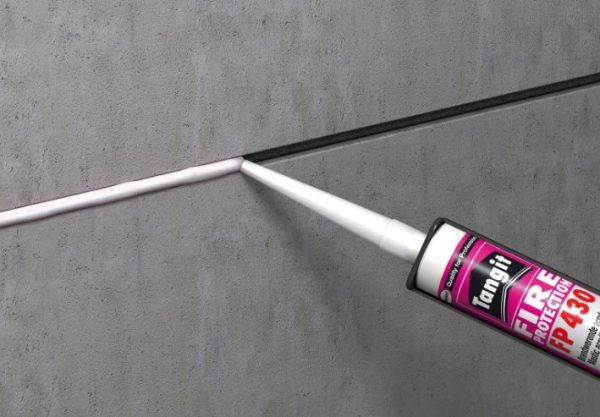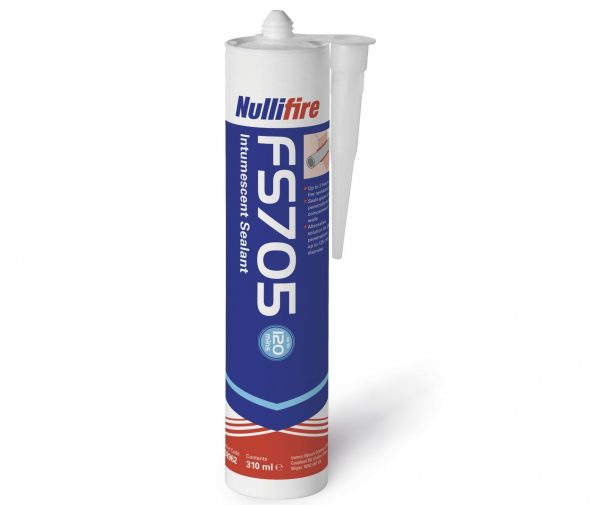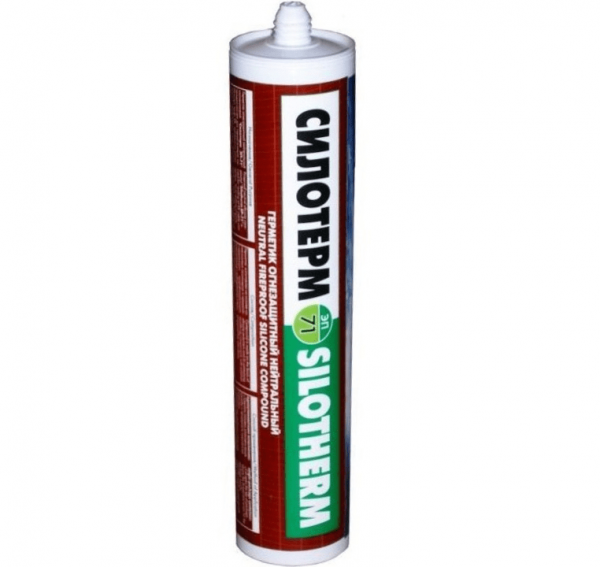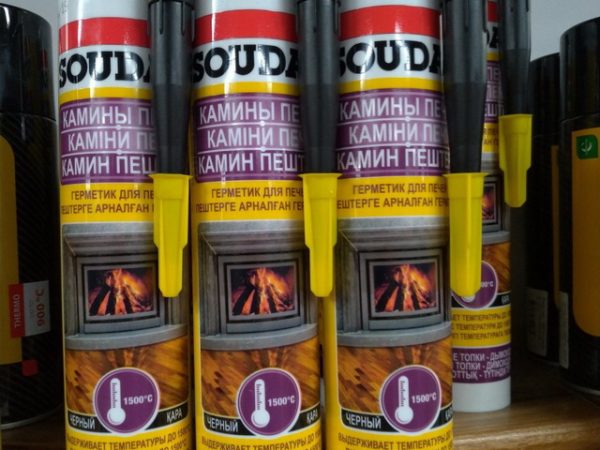When installing pipelines, aluminum heat exchangers in boilers, engineering systems and various industrial equipment, the use of special non-combustible sealants is often required. Such tools help seal joints, make structures more reliable and extend their service life. Fireproof sealant also enhances fire protection and solves a number of other tasks.
- Types of flame retardant sealants
- Fireproof joint sealing requirements
- Sealant Properties
- Criteria for choosing flame retardant sealants and the best tools
- Scope of fireproof sealants
- Advantages and disadvantages
- Nullifire Heat Resistant Sealants
- Hilti flame retardant sealants
- Heat-resistant sealant "Siloterm EP-71"
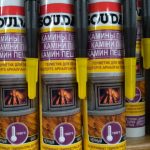
Types of flame retardant sealants
Refractory sealant is a heat-resistant pasty or viscous substance based on polymers, which is used to prevent leakage of liquids through gaps, as well as for waterproofing and sealing. All sealants that can withstand temperatures of +200 degrees are considered heat-resistant, they are similar in physical properties, although they have different chemical composition and specific technical characteristics.
Sealants depending on the field of application, heat resistance index and composition are divided into the following groups:
- Polymer intumescent. They are thermally expanding: when heated, they increase in size, as a result, the joints are more densified. Flame retardant sealant with such properties is ideal for closing holes during wiring, for sealing expansion joints.
- Acrylic Made on the basis of acrylic, most often used to close the seams between ceramic tiles on the outside of stoves, fireplaces. Usually have a white color. May be subject to moderate heat, but do not tolerate contact with open flame. Nevertheless, acrylic sealants are considered fireproof: they flash, but immediately stop burning and almost do not emit smoke, they do not contribute to the spread of flame.
- Silicone One-component transparent compositions widely used for sealing the visible part of structures. Suitable for metal, concrete, tile, plastic and many other materials. Most often, silicone-based products are used in transit installation of equipment in fire hazardous premises, and during installation of pipelines. They can be acidic and neutral, with the latter being an order of magnitude more expensive and more efficient.
- Silicate. Organosilicon-based products (“liquid glass”) can withstand up to +1500 degrees, so they can even be used to seal joints that are in direct contact with fire.
Fireproof joint sealing requirements
Any fireproof sealant is made in accordance with existing state standards, technical specifications, norms and other documents regulating production.Each product must receive a certificate of conformity, which is assigned after passing tests for resistance to heat, fire, etc.
The list of requirements for flame retardant sealants is specified in the PPB Fire Protection Joint Venture, and their amendments are reflected in Art. 87, 88 Federal Law No. 123. The main requirement for water-tight flame retardant sealants is the ability to localize the flame, to limit the spread of fire, to maintain the integrity of the fire walls. As indicated in the normative documentation, refractory sealants are used for fire protection. Here are the main ones:
- sealing joints of pipes and ceilings;
- sealing joints between structures made of wood and metal;
- cable protection when laying electrical wiring;
- increased tightness of fire-prevention double-glazed windows;
- installation of ventilation systems, air channels;
- joining of floor slabs to each other;
- sealing different joints in fire compartments;
- waterproofing of rooms, roofs.
Sealant Properties
Fireproof sealants are available in cartridges, tubes, buckets and barrels. Their main difference from conventional sealing compounds is the ability to withstand the action of the flame, strong heating, while not flashing or not supporting combustion. Some sealants are not combustible at all, others are slow-burning, self-extinguishing within a short period of time.
to contents ↑Any sealant is quite elastic, because it has to regularly undergo expansion and contraction of the base material, which inevitably occurs during heating and cooling. Also, all sealants are waterproof, have excellent adhesion to the surface. Depending on the composition, sealing agents to varying degrees withstand contact with oils, chemicals, and petroleum products.
Criteria for choosing flame retardant sealants and the best tools
To choose the right composition, you should carefully read the instructions and look at the markings. The degree of fire resistance is always indicated on the package under the designation EI with numbers, where E is the time of loss of integrity, I is the period of loss of thermal insulation (in minutes). The higher these indicators, the more reliable the composition, the longer it will withstand heating or contact with fire.
When buying, it is also important to take into account the nature of the work: some sealants are suitable for the exterior, others for the interior, although there are universal compounds. There are specialized tools for sale, for example, for sealing window blocks. Neutral silicone sealants are suitable for absolutely all materials, acidic can harm natural stone, some types of metal.
The quality of the sealant is of great importance, therefore it is better to purchase only means of proven brands:
- "Stop Fire EP-71." Neutral composition for local sealing of cavities, joints, seams, fixing of double-glazed windows, doors. It withstands up to +200 degrees for a short time, up to +270 degrees for a short time.
- Siloterm EP-100. Operating temperature reaches +250 degrees. Great for wet rooms to seal joints.
- "Fire GT". When heated to +200, it swells, expanding in three directions, which prevents the penetration of smoke and fire into neighboring rooms. It has high frost resistance. Refractory tape “Ogneza-LTU” is also produced under this brand.
- "Macroflex HA147". Withstands up to +1200 degrees, does not deteriorate from short-term heating up to +1500, does not shrink, can be painted.
- Invamat. Acrylic sealant designed to contain an open flame. It is used for work on glass, metal, wood.
- Soudal Silicone B1 FR. Neutral silicone composition for exterior and interior use, has a low flammability class, resistant to UV radiation, water.
- Intumex MG. Pasty gray acrylic based sealant that prevents the spread of fire. Expands under pressure, can be painted after drying.
- VGO-100. Viscous intumescent composition, well suited for sealing cable passages, filling cavities when installing refractory glasses.
Scope of fireproof sealants
Initially, fire fighting compounds were made on the basis of clay and cement and used for various construction works. Nowadays modern refractory sealants are produced with the addition of various synthetic substances, polymers, and the scope of their use has expanded significantly. They are suitable for:
- air ducts;
- fire-prevention windows, doors;
- pipeline networks;
- ventilation ducts;
- vehicle engines;
- heat generating units;
- electrical routes;
- wire entries into equipment enclosures, junction boxes.
The most heat-resistant sealants ensure the tightness of joints in aggressive conditions of long-term high-temperature exposure. They are also able to tolerate extremely high temperatures and contact with undiluted acids for a short time.
Such tools are used in the installation of stoves, fireplaces, for a number of other purposes. Sealants that do not deteriorate from the influence of fuels and lubricants are suitable for the assembly and repair of cars, diesel locomotives, and other equipment.
to contents ↑Advantages and disadvantages
Fireproof sealants have a number of advantages that distinguish them among materials with a similar purpose:
- resistance to high-temperature action, no burnouts (for a number of products);
- high degree of adhesion to most building and finishing materials;
- the absence of hazardous substances in the composition, the release of toxins when heated;
- dielectric properties;
- lack of deformation, cracking due to elasticity;
- the ability to withstand vibration, UV radiation, radiation exposure, the influence of moisture, detergents, the life of microbes;
- long period of operation (up to 40 years);
- the availability of convenient forms and various volumes on sale.
The disadvantages include the increased cost of such products compared to conventional sealants, but this pays off with a host of advantages.
to contents ↑Nullifire Heat Resistant Sealants
The Nullifire brand is a leader in the manufacture of flame retardant compounds. Here are the most famous products:
- Nullifire M701. Acrylic composition for enclosed spaces, does not burn for at least 300 minutes when exposed to fire. Suitable for wood, metal, reinforced concrete. It can withstand severe deformation without cracking (up to 20%).
- Nullifire M703. The estimated sealant deformation without spoilage is 50%. It is suitable for outdoor use, does not lose properties at sub-zero temperatures, withstands heating up to +1200 degrees.
- Nullifire M705. Intumescent composition, expands at + 250 ... + 300 degrees, made on the basis of graphite. Most often used to seal cable penetrations, pipelines.
Hilti flame retardant sealants
Hilti sealants are designed for structures prone to deformation. The most popular are such tools:
- Hilti CP 601S - neutral silicone sealant that traps smoke, gas, water, hardens after 15 minutes, suitable for outdoor use;
- Hilti CP 606 is an acrylic composition for sealing sedentary joints, hardens in 30 minutes, can be painted, intended for interior use.
Heat-resistant sealant "Siloterm EP-71"
This sealant is prepared on the basis of durable silicone elastomer. It is used for sealing seams, joints on building structures, arranging fire protection systems, sealing cables, couplings and adapters, installing double-glazed windows.
A variety of sealant "Silotherm EP-71M" is used to create fire-resistant electrical insulation coatings, perform corrosion protection. The Siloterm EP-71 kNS version has enhanced elasticity, therefore it is suitable for highly deformable joints. All means differ:
- radiation resistance;
- moisture resistance;
- ability to coke under the influence of fire;
- explosion safety;
- frost resistance;
- ability to electrical insulation.
The use of sealants will help strengthen fire protection, reliably seal all seams and cavities. You should not save on their purchase: it is better to choose a reliable product of a well-known brand in order to take care of its safety.


